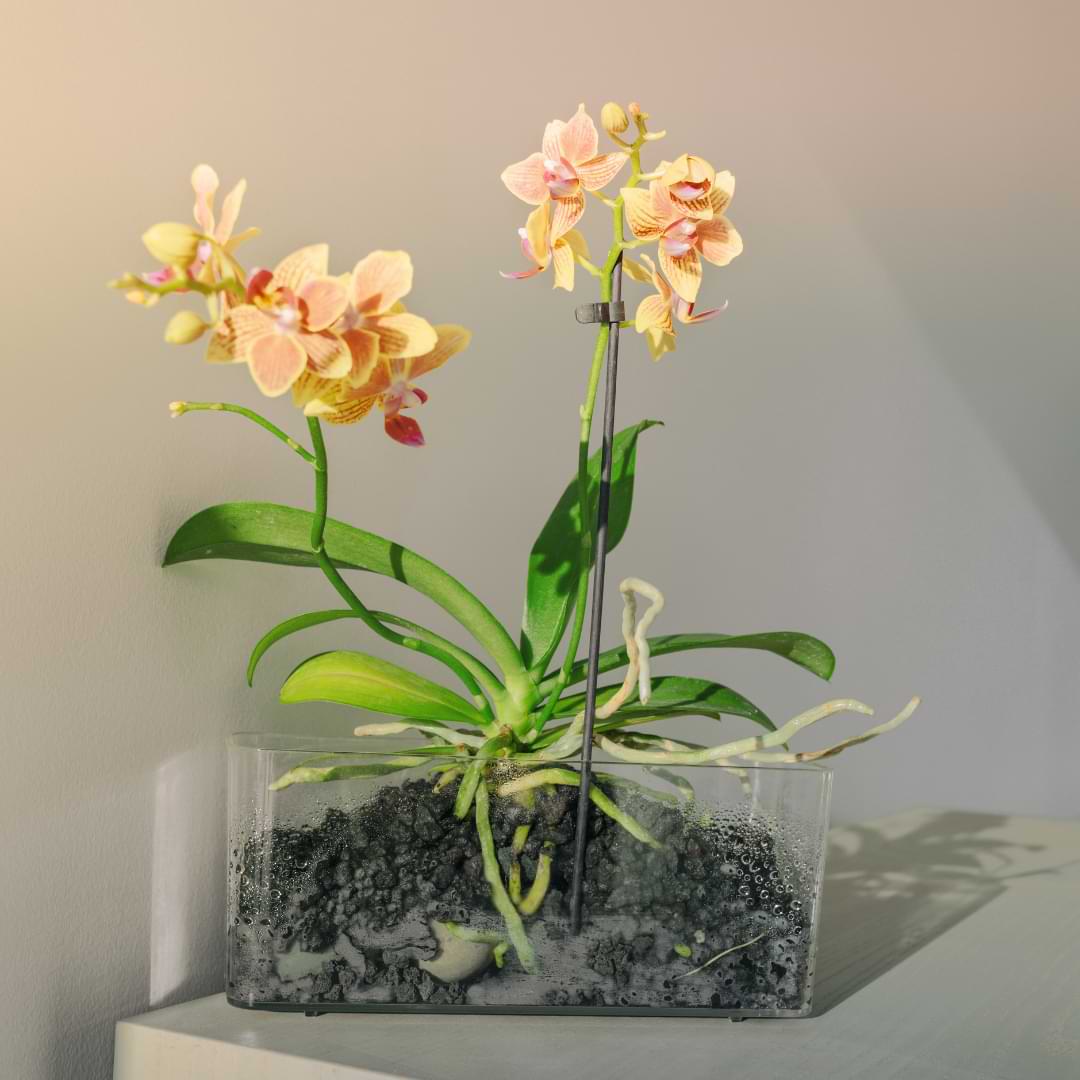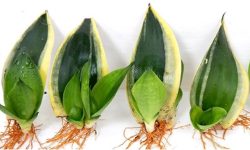Orchids are a fascinating type of plant that have many unique features, including their air roots. But why do these beautiful flowers have roots that grow out of the air? It turns out that there are a few reasons for this strange growth habit.
For one thing, orchids typically grow in humid environments where there is plenty of moisture in the air. Their air roots help them to absorb this extra moisture, which they need in order to survive. Additionally, these roots provide support for the plant as it grows.
By anchoring themselves to branches or other surfaces, they help the orchid to stay upright and avoid being blown away by strong winds.
Finally, air roots also help to keep the plant cool. In hot weather, evaporation from these roots can help to lower the temperature around the orchid, keeping it from getting too warm and stressed.
So next time you see an orchid with its strange-looking air roots, remember that they serve an important purpose!
Orchids are one of the most popular and well-known flowers in the world. They come in many different colors and varieties, and have been cultivated for centuries. One of the most intriguing things about orchids is their air roots.
Why do orchids have air roots? There are a few reasons. First, air roots help to absorb moisture and nutrients from the air.
Orchids are epiphytic plants, which means that they grow on other plants or objects, rather than in the ground. This can make it difficult for them to get the moisture and nutrients they need from the soil. Air roots help to supplement this by absorbing what they need from the surrounding air.
Second, air roots help to stabilize the plant. Because they are not anchored into the ground, orchids can be quite top-heavy and prone to falling over. The air roots act like little anchors, helping to keep the plant steady.
Finally, air roots serve as storage organs for the plant. Orchids often go through periods of drought, when there is little water available. The plant will store water in its leaves and stems, but it will also store water in its air roots.
This reserve can help keep the plant alive during dry spells until conditions improve again.
So why do orchids have such strange-looking Roots? It turns out that they serve a number of important functions for these fascinating plants!
Can an Orchid Live With Only Air Roots
One of the most fascinating things about orchids is that they can live with only air roots. That’s right- no soil required! These beautiful plants get all the nutrients and moisture they need from the air around them.
So, how do they do it? Air roots are covered in a velamen, which is a spongy tissue that absorbs water and nutrients from the atmosphere. The plant then takes these up through its stem and into the leaves where they’re used to support growth.
Interestingly, not all orchids are epiphytes (plants that grow on other plants or objects). There are also terrestrial orchids, which grow in soil like other plants. However, even these types of orchids have aerial roots that help them absorb water and nutrients from the air.
If you’re thinking of growing an orchid yourself, there’s good news- they’re relatively easy to care for! Just give them bright indirect light and keep their potting mix moist (but not soggy). And if you ever see an Orchid with only air roots, now you know how this amazing plant is able to survive without any soil at all!
Propagating Orchids from Aerial Roots
Orchids are one of the most popular houseplants, and for good reason! They’re beautiful, come in a wide variety of colors and shapes, and they’re relatively easy to care for. One of the best things about orchids is that they can be propagated relatively easily from aerial roots.
In this post, we’ll go over everything you need to know about propagating orchids from aerial roots.
Aerial roots are long, thin roots that grow down from the stem of an orchid plant. These roots are typically white or green, and they help the plant absorb moisture and nutrients from the air.
You can propagate orchids by taking a cutting from an existing plant and placing it in a pot with moistened sphagnum moss. The cutting will eventually produce its own aerial roots, which you can then use to propagate more plants!
The first step in propagating your orchids is to take a healthy cutting from an existing plant.
Make sure to choose a cutting that has at least two leaves, as this will help ensure that your new plant will be able to photosynthesize properly. Once you have your cutting, remove any lower leaves so that only the uppermost leaf is remaining. This leaf will act as your new plant’s food source until it produces its own leaves.
Next, dip the base of your cutting into some rooting hormone powder (this step is optional but will help encourage root growth). Then, place your cutting into a pot filled with moistened sphagnum moss. Be sure to keep the moss moist but not wet; too much moisture can lead to fungal problems for your new plants.
Place the pot in a bright location out of direct sunlight and wait for your new plants to sprout!
Orchid Roots Growing Up
Orchid roots are not like the roots of most other plants. They are thin and fleshy, and they grow up instead of down. This is because orchids grow in trees, and their roots need to be able to grip the bark tightly.
The majority of an orchid’s roots are above ground, where they can absorb moisture and nutrients from the air. However, some of the roots will also grow down into the soil at the base of the tree. These subterranean roots anchor the plant firmly in place and help to collect water from deep within the ground.
Orchids have a unique root system that allows them to thrive in habitats that other plants could never survive in. By understanding how these amazing plants get their start in life, we can better appreciate their beauty when they bloom.
What Do You Do When Orchid Roots Grow Out of Pots?
If you notice that your orchid’s roots are growing out of the pot, don’t panic! This is actually a fairly common problem with these beautiful plants. There are a few things you can do to fix it.
First, take a look at the size of your pot. If it’s too small, then it’s probably time to upgrade to a larger one. The roots need room to grow, so a cramped pot is only going to make the problem worse.
Once you’ve got a new pot, repot your orchid using fresh potting mix. Be sure to loosen up the roots a bit before putting them into the new pot – this will help them spread out and avoid getting rootbound again.
Finally, give your orchid some extra TLC for a few weeks while it adjusts to its new home.
Water it regularly and keep an eye on it to make sure everything is going smoothly. With a little patience, your orchid will be back to normal in no time!
Orchid Only Has Air Roots
Orchids are beautiful and unique flowers that come in a variety of colors, shapes, and sizes. They are native to tropical and subtropical regions around the world and can be found growing in many different types of habitats. One thing that makes orchids so special is that they have roots that are adapted for life in the air.
Most plants have roots that anchor them into the ground where they can access water and nutrients. Orchids, on the other hand, have developed air-filled roots that allow them to attach themselves to trees or other objects in their environment. These specialized roots absorb moisture and nutrients from the air around them.
One reason why orchids grow best in humid environments is because their air roots need a lot of moisture to stay healthy. If the air is too dry, the roots will start to shrivel up and the plant will eventually die. That’s why it’s important to mist your orchid regularly if you want it to thrive!
So, next time you see an orchid growing high up in a tree, remember that it doesn’t need soil to survive – just plenty of humidity!

Credit: orchidresourcecenter.com
What Do I Do With the Air Roots of an Orchid?
When orchids are grown in tree bark, they will sometimes produce long, thin roots that hang down from the pot. These are called air roots and they serve an important purpose in the plant’s life cycle.
The air roots of an orchid help the plant to absorb moisture and nutrients from the atmosphere.
They also anchor the plant to its support and help it to climb. In some cases, air roots can also act as storage organs for water and food.
If you find that your orchid is producing a lot of air roots, it is probably because it is not getting enough water or nutrients from the potting mix.
If this is the case, you will need to water and fertilize your plant more frequently. You may also need to repot your orchid into a larger pot with fresh potting mix.
If you don’t want your orchid to produce so many air roots, you can try growing it in a different type of potting mix such as sphagnum moss.
You can also try growing it in a pots with drainage holes covered with mesh to prevent root escapees.
Should I Cut the Air Roots off My Orchid?
If your orchid is growing air roots, it’s perfectly fine to remove them. Air roots are basically just adventitious roots that grow out of the stems of the plant. They don’t serve any real purpose for the plant, so you can trim them off without harming your orchid.
What is the Function of Air Roots?
Air roots are a type of root that grows above the ground. They are often found in epiphytic plants, which are plants that grow on other plants or objects. Air roots help these plants to anchor themselves and to absorb moisture and nutrients from the air.
Some air roots also have a storage function, holding water and nutrients for the plant to use during times of drought.
Why Does My Orchid Not Have Air Roots?
One of the most common questions we get here at Orchidaceae is “Why does my orchid not have air roots?”. There can be a few reasons for this, so let’s take a look at some of the possibilities.
First off, it’s important to remember that not all orchids produce air roots.
Some species simply never produce them, while others only do so under specific conditions (like when they’re growing on a tree). So if your orchid doesn’t have any air roots, don’t worry – it’s perfectly normal!
However, if your orchid used to have air roots and they suddenly disappeared, there could be an issue.
One possibility is that the roots were damaged somehow – perhaps you accidentally cut them off when repotting the plant. Another possibility is that the plant is stressed in some way and has stopped producing air roots as a result. If this is the case, try to identify the source of stress and see if you can remove it (for example, by moving the plant to a brighter spot).
If you’re still not sure why your orchid doesn’t have any air roots, feel free to bring it into our shop and we’ll take a look at it for you. We might be able to help you figure out what’s going on and how to fix it!
Do Green Roots on Orchids Serve the Same Purpose as Air Roots?
Green roots on orchids serve a different purpose than air roots. While air roots absorb moisture and nutrients from the air, green roots function primarily in photosynthesis. They contain chlorophyll, allowing them to produce energy through sunlight. That’s why orchids have green roots, to supplement their nutritional needs through photosynthesis alongside the traditional root system.
Orchid aerial roots – Why Orchids grow them, what to do about them
Conclusion
Orchids are a type of plant that is known for its beauty and its unique root system. Orchids have what are called air roots, which are Roots that grow out of the stem of the plant and into the air. These roots help to absorb moisture and nutrients from the air, which helps to keep the plant healthy.
There are several reasons why orchids have air roots, including: To absorb more moisture – Air roots help to absorb moisture from the air, which can be helpful during periods of drought. To get more nutrients – Air roots can also help to absorb nutrients from the air, which can be helpful if the soil in which the orchid is growing is poor in nutrients. To stabilize the plant – Air roots can help to stabilize an orchid plant, preventing it from toppling over.
This is especially important for tall varieties of orchids.






